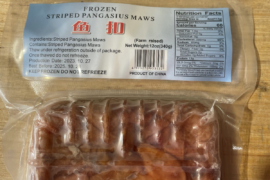Bergen, Norway-headquartered Marine Harvest, the world’s top producer of farm-raised salmon, has issued a press release regarding the recent Calbuco volcanic eruption in Argentina, an area where it is active in the aquaculture business.
“We are pleased to report that all our employees affected by the eruption are safe, and we have not reported any injuries to staff,” stated the company. “We have two sites located within the 20 kilometre exclusion zone put in place by the national emergency office ONEMI. Rio Blanco is a fresh water hatchery handling eggs and producing fry, and Copihue is a broodstock facility. Volcanic material and landslides have affected such operations adversely. In this incident 6.8 million fry, 2.4 million eyed eggs and around 3,700 broodstock have been lost.”
Marine Harvest’s preliminary assessment is that insurance proceeds related to physical assets will exceed asset net book values. “In addition, we have insurance coverage of our biomass,” stated the company. “We are in discussion with our insurance provider (to determine) if the recorded value qualifies for full recovery. The outcome of such discussions is at this stage uncertain.”
The company’s stocking plans and expected harvest volumes for 2015 and 2016 are not expected to be affected by the volcanic eruption, as its sea water operations in Region X and Region XI continue as normal.
Meanwhile, on April 29 Marine Harvest reported a satisfactory operational EBIT for the first quarter of 2015. As such, a dividend of NOK 1.30 per share will be paid to shareholders.
“I am very pleased with the strong result in Norway and a strong biological performance in our Canadian operations. Challenging market conditions in the Americas remains a concern,” said CEO Alf-Helge Aarskog.
The Marine Harvest Group reported operational revenue of NOK 5,652 million in the first quarter of 2015 (compared to NOK 5,241 million) during the same period in 2015. Total harvest volume tipped the scales at 83,409 tons in the quarter (vs. 74,502 tons in 2014). Harvest guidance for 2015 is 374,000 tons (including discontinued operations 440,000 tons).
Salmon of Norwegian origin achieved an operational EBIT per kilo of NOK 12.87 (NOK 12.83) in the first quarter, while salmon of Scottish and Canadian origin recorded operational EBIT per kilo of NOK 2.70 and NOK 4.90, respectively (NOK 12.66 and NOK 18.42). The figures include contribution from the company’s Sales and Marketing unit, including MH Consumer Products, which reported an operational EBIT of NOK -2 million compared to NOK -63 million in the first quarter in 2014. MH Feed posted an operational EBIT of NOK 19 million (NOK -16 million).
“We see a favorable market and supply outlook for Europe. As for the Americas, we continue to monitor the development closely,” said Aarskog.





